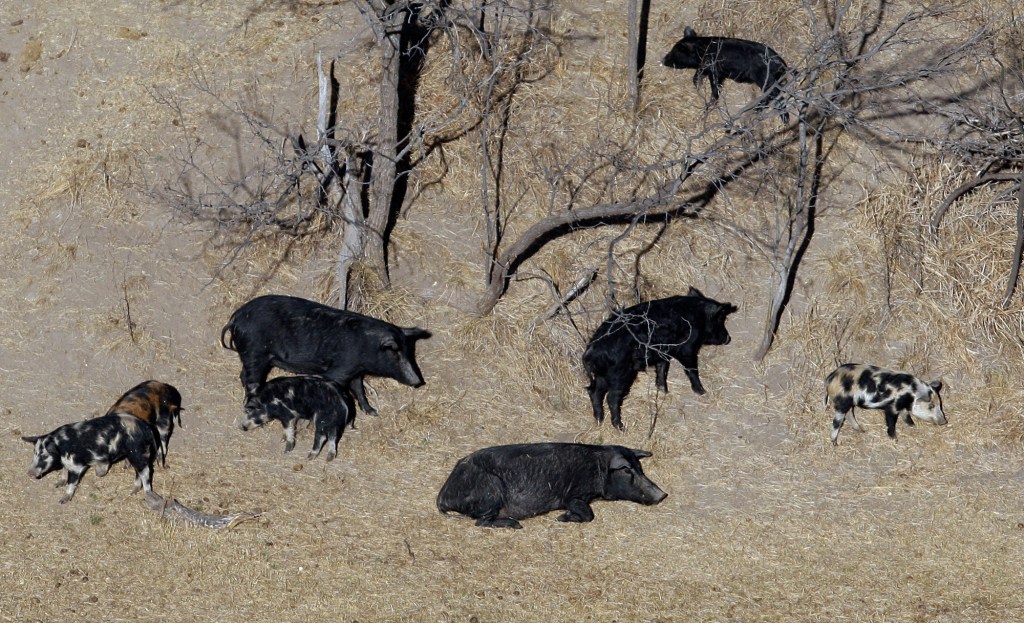By Steve Karnowski | Associated Press
MINNEAPOLIS — An exploding population of hard-to-eradicate “super pigs” in Canada is threatening to spill south of the border, and northern states like Minnesota, North Dakota and Montana are taking steps to stop the invasion.
In Canada, the wild pigs roaming Alberta, Saskatchewan and Manitoba pose a new threat. They are often crossbreeds that combine the survival skills of wild Eurasian boar with the size and high fertility of domestic swine to create a “super pig” that’s spreading out of control.
Ryan Brook, a professor at the University of Saskatchewan and one of Canada’s leading authorities on the problem, calls feral swine, “the most invasive animal on the planet” and “an ecological train wreck.”
Pigs are not native to North America. While they’ve roamed parts of the continent for centuries, Canada’s problem dates back only to the 1980s when it encouraged farmers to raise wild boar, Brook said. The market collapsed after peaking in 2001 and some frustrated farmers simply cut their fences, setting the animals free.
It turned out that the pigs were very good at surviving Canadian winters. Smart, adaptable and furry, they eat anything, including crops and wildlife. They tear up land when they root for bugs and crops. They can spread devastating diseases to hog farms like African swine fever. And they reproduce quickly. A sow can have six piglets in a litter and raise two litters in a year.
That means 65% or more of a wild pig population could be killed every year and it will still increase, Brook said. Hunting just makes the problem worse, he said. The success rate for hunters is only about 2% to 3% and several states have banned hunting because it makes the pigs more wary and nocturnal — tougher to track down and eradicate.
Wild pigs already cause around $2.5 billion in damage to U.S. crops every year, mostly in southern states like Texas. And they can be aggressive toward humans. A woman…
Read the full article here







